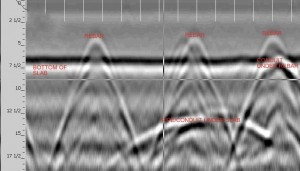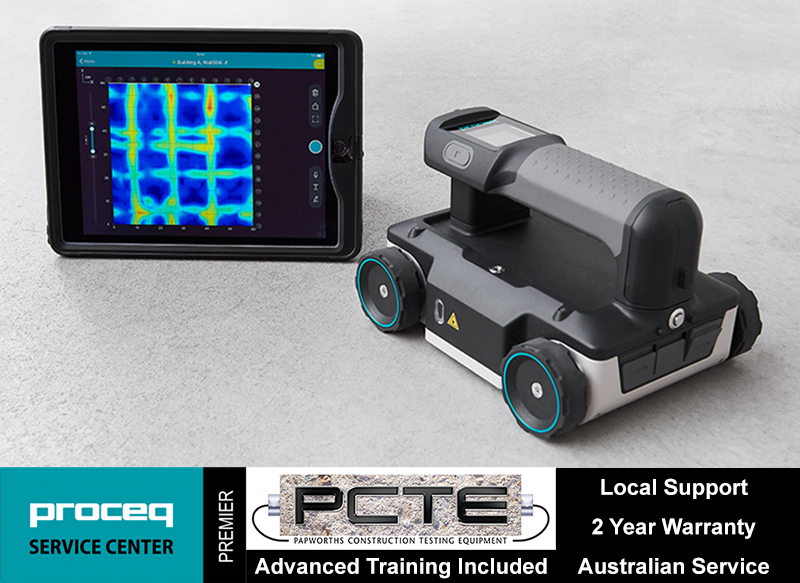The Scientific research of Construction: Concrete Scanning and Imaging
Wiki Article
Past the Surface area: Untangling the Secrets of GPR Scanning for Concrete Applications
Are you ready to dive deeper into the world of GPR scanning for concrete applications? Discover the essentials of GPR scanning, find out just how it works, and check out finest practices for carrying out scans on concrete surfaces.The Fundamentals of GPR Scanning for Concrete Applications
GPR scanning is frequently utilized to analyze the condition of concrete frameworks. When you make use of GPR scanning, you can conveniently untangle the keys that exist underneath the surface of the concrete. It supplies you with useful info about the internal structure of the concrete and helps you recognize any kind of prospective issues or defects.With GPR scanning, you can swiftly and non-destructively establish the density of the concrete slab and situate any kind of spaces or delaminations within it - Concrete Scanning and Imaging. This information is essential for assessing the structural honesty of the concrete and preparing any essential repair services or maintenance
In addition, GPR scanning permits you to spot the existence of reinforcing steel bars, additionally understood as rebar, within the concrete. This is important for analyzing the strength and resilience of the framework, in addition to for guaranteeing correct building techniques were complied with.
On top of that, GPR scanning can spot the visibility of wetness or water seepage within the concrete. This is particularly vital as moisture can bring about corrosion of the reinforcing steel, which can endanger the structural stability of the concrete with time.

Comprehending the Modern Technology Behind GPR Scanning
To recognize exactly how it functions, you require to grasp the technology behind GPR scanning. Ground Permeating Radar (GPR) is a non-destructive testing approach that uses electro-magnetic waves to identify subsurface items and features. The antenna receives the mirrored waves and sends the data back to the control device.GPR scanning runs on the principle of time travel. By evaluating the time and strength of the reflected waves, GPR can figure out the deepness and location of items within the concrete.
Ideal Practices for Carrying Out GPR Checking on Concrete

Interpreting GPR Scanning Outcomes for Concrete Applications
As soon as you have carried out the GPR scans on the concrete, it's time to evaluate and translate the outcomes to get beneficial understandings. The analysis of GPR scanning results is an essential step in understanding the condition of the concrete and determining any type of prospective problems.In addition to identifying problems, the interpretation of GPR results can also help determine the thickness and make-up of various concrete browse this site layers. By examining the representations and diffractions in the GPR data, you can estimate the depth and density of numerous layers, such as the concrete cover, support, or any type of other embedded components. This details is crucial for analyzing the architectural honesty of the concrete and click for source intending any necessary repair work or maintenance job.

Advanced Techniques for GPR Scanning in Concrete Analysis
By using sophisticated techniques, you can enhance the precision and resolution of GPR scans for examining concrete structures (Concrete Scanning and Imaging). One such technique is called multi-frequency GPR scanning. On the whole, by using these advanced strategies, you can substantially enhance the effectiveness of GPR scanning in assessing concrete structures.Final Thought
So there you have it - the secrets of GPR scanning for concrete applications have actually been unraveled. Currently that you recognize the basics of this innovation and just how it works, you can with confidence perform GPR scanning on concrete structures.Discover the essentials of GPR scanning, discover just how it functions, and explore finest techniques for conducting scans on concrete surfaces. When you utilize GPR scanning, you can conveniently unwind the keys that lie below the surface area of the concrete. The analysis of GPR scanning results is a vital action in understanding the condition of the concrete and determining any type of potential problems. On the whole, by utilizing these advanced methods, you can substantially improve the effectiveness of GPR scanning in evaluating concrete structures.
Now that you comprehend the essentials of this technology and how it works, you can confidently conduct GPR scanning on concrete structures.
Report this wiki page